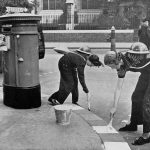This week at The Archive we are delighted to have reached another landmark, having passed 59 million pages in total over the past seven days alone. We have added 312,002 brand new pages, with a trio of exciting specialist titles joining us, one of which covers in illustrated detail the First World War, as well as adding a range of new titles from across England and Scotland, from Carluke to Chester, from Bolton to Nottingham. We’ve also updated 82 of our existing titles this week.
So read on to discover more about all of the new and updated titles of the week, as well as to find out more about attitudes towards the contribution of women to the war effort in the First World War.
Register now and explore the Archive
We begin our journey into our new titles of the week with a very special title that covers all things to do with the First World War: War Pictures Weekly and the London Illustrated Weekly. As its name belies, it was set up soon after the outbreak of war in August 1914, to ‘present a pictorial history of the war.’
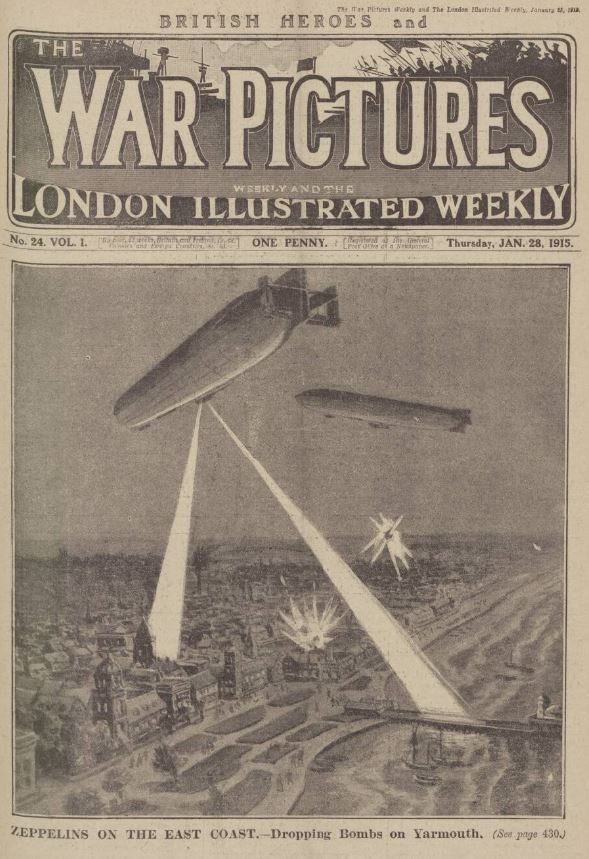
War Pictures Weekly first hit the newsstands on 20 August 1914 at the price of just one penny. Filing eighteen pages, the first edition also proclaimed that it featured a ‘large double-page war map,’ as well as laying out its intentions:
The long-foretold Great War has come at last! And with it ourselves, launched like a stormy petrel on this sea of trouble…Our object is to present a pictorial history of the war, and most objects of interest in connection with it. We intend to describe fully every picture, and to give a short and comprehensive résumé of the week’s doings, but not to burden our Readers with lengthy repetitions of what they have probably already read in their daily papers. In short, we will give as many pictures and illustrations as we can, and the accompanying letterpress we shall endeavour to make as brief and pithy as possible.
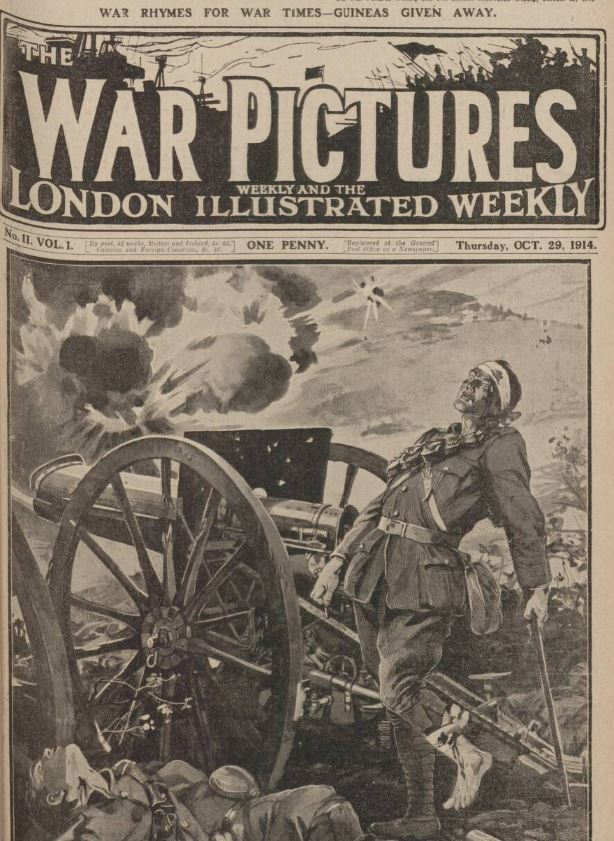
There is something almost unnerving reading these lines over one hundred years later, given that the war became known as the ‘war to end all wars.’ In August 1914 the writers behind War Pictures Weekly could not have known this, and yet, there is almost an uncanny sense that they knew full well what the conflict would mean for the generations to come. Its pages are littered with commands to ‘Keep your copies of ‘War Pictures’ for your children to look at after years’ and to ‘Order next week’s ‘War Pictures‘ early, as the supply is limited and paper is hard to obtain at present.’ Indeed, the line ‘The present War will be the greatest ever known: therefore preserve our Pictorial Record for the children’ is deeply profound.
So aside from capitalising on the war fever that was raging in the United Kingdom at the time, War Pictures presented an array of photographs and drawings, which captured everything from the German infantry to ‘brave Belgian soldiers,’ depicting fighting on land, on sea, and in the air. Some of the illustrations are direct and startling, such as one of food riots in Britain, which were only quelled by police intervention.
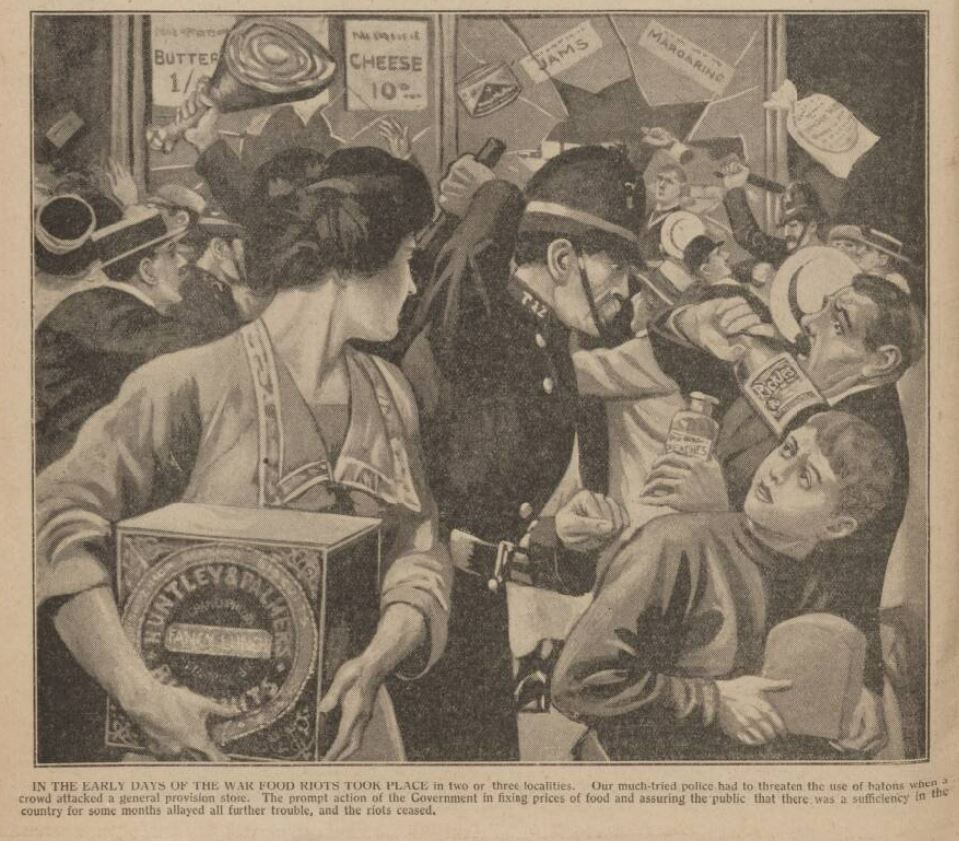
Another fascinating feature of War Pictures is the maps it included. The first edition featured a map of Europe, alongside details of the comparative sizes of the respective armies involved in the conflict. Britain’s own army was dwarfed in comparison to the German, Russian and French armies.
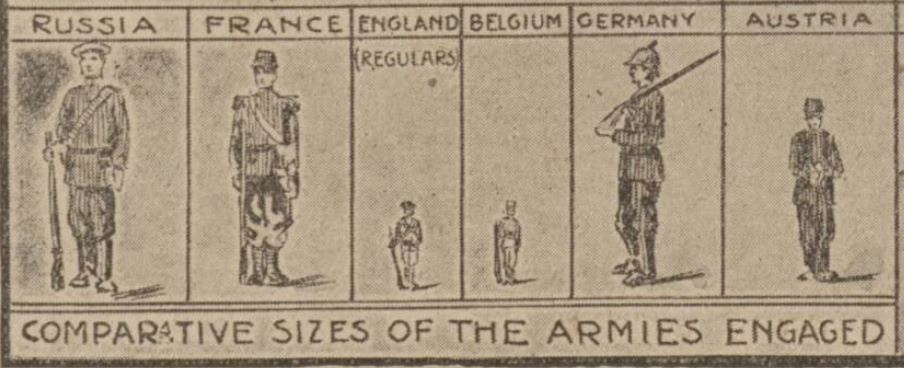
On 9 September 1915, the publication became known as the London Illustrated Weekly. At this point, the weekly title became more general, although it did feature the latest news from the ongoing conflict. It had, however, widened its remit to feature a ‘Children’s Corner,’ as well as focussing on light entertainment, with a section dedicated to ‘Cinema Notes and News.’ Perhaps its more light-hearted approach stemmed from the fading of the war fever from earlier in the conflict, when it became obvious that the troops would not be home for Christmas.
Whatever the reason behind this pivot, the London Illustrated Weekly now included such sections as ‘This Week’s Funny Stories,’ and its front page stood out, with the introduction of a bright coloured background. The final editions of the London Illustrated Weekly appeared in 1916.
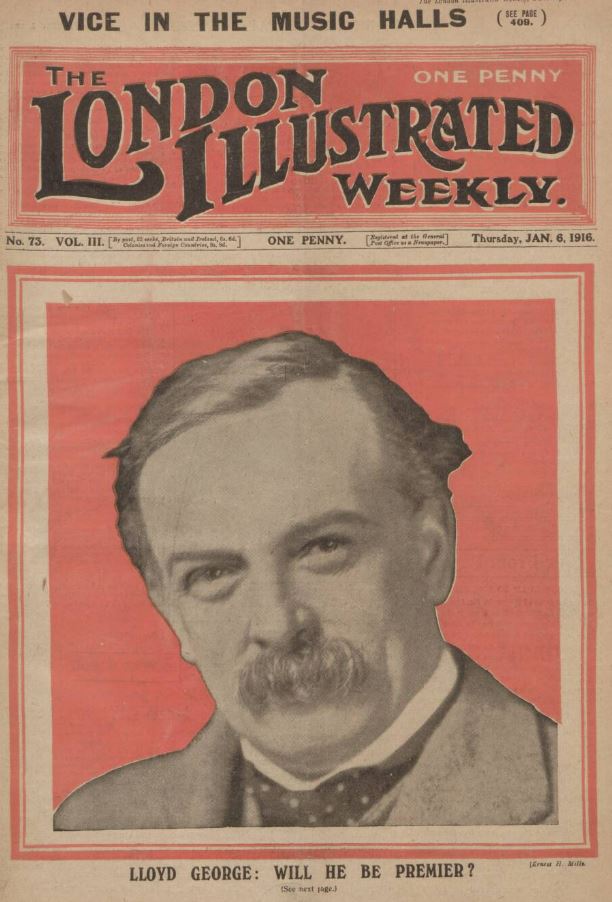
We have another colourful new title joining The Archive this week, the Million, which was established by the ‘founding father of popular journalism’ George Newnes (1851-1910) in 1892. A politician and a publisher, Newnes founded the likes of best-selling magazine Tit-Bits, as well as the Strand Magazine, the Westminster Gazette, and Country Life.
The Million represented Newnes’s, who was a Liberal M.P., ambition to bring colour to the masses. At that time, in the early 1890s, the masses were known as ‘the million,’ and hence, his new publication was named after them. The publishing world in Britain had been slow to adapt to the use of colour, but Newnes wanted to change this. He had his new title, Million, printed on letterpress machines, which did not require the use of expensive paper, by the London Colour Printing Company at Exmoor Street.
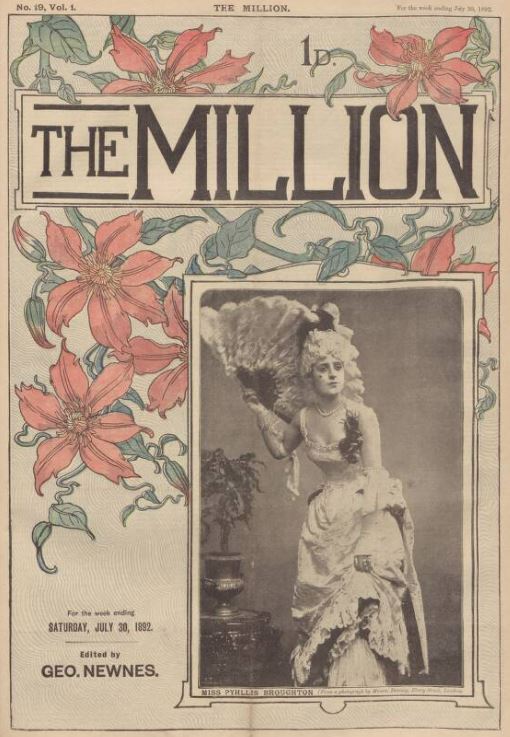
Costing just one penny, the Million was affordable and appeared weekly on a Saturday. Its twelve pages were filled with lively special interest features and illustrations, and it is obvious from its content that the publication’s aim was to educate as well as to entertain. Some of the features printed in Million included ‘Interviews with Interesting People,’ such as French acrobat Charles Blondin, as well as a look at ‘the Latest Fashions,’ both columns being accompanied by illustrations.
Meanwhile, the Million featured a range of interesting pieces, with articles on everything from ‘The Meat Porters of London’ to ‘How To Overcome Sleeplessness.’ And with its eye on educating its audience, Million published pieces by the likes of T.P. O’Connor, the Irish nationalist politician and journalist, who took readers ‘Behind the Scenes of the House of Commons.’ It also featured a special column for children, entitled ‘Children’s Hour,’ complete with illustrations and informative pieces about the natural world.
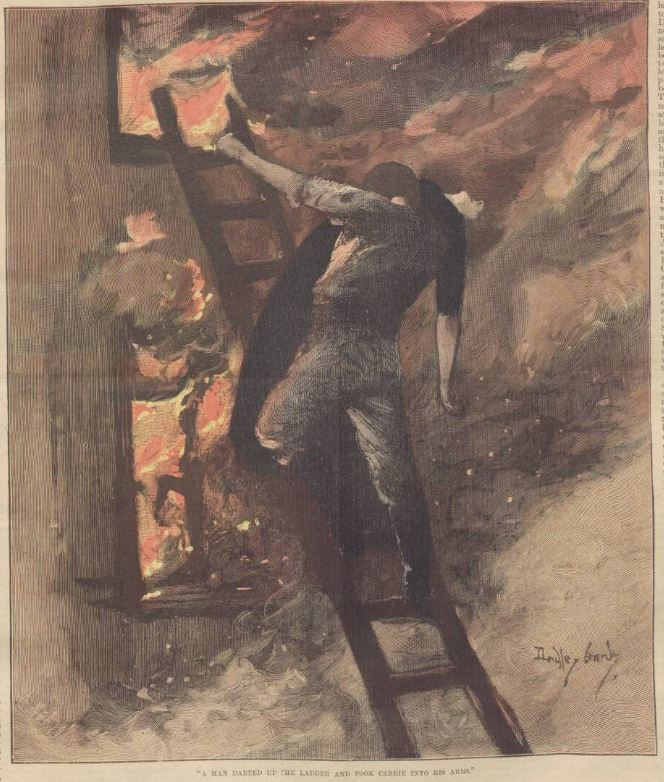
Indeed, Million was a lively and entertaining publication, which also featured serialised fiction, stories from the past and a look at ‘Local Curiosities,’ like the oldest pub in Britain.
In 1895 it became the Firefly, noting that it now ‘incorporated’ the Million, but the publication was not to last. Despite influencing publishers across the Atlantic in the United States to utilise colour, the Million was a rare failure in George Newnes’s otherwise successful publishing career. It survives today, however, as a wonderful insight into what the ‘million’ may have been interested in in the 1890s.
Another fascinating title joining us from the 1890s is Pals, a ‘magazine of stories for boys.’ Edited by Vane Ireton Shaftsbury St John (1838-1911), who was known as a writer of boys’ short stories and ‘Penny Dreadful’ fiction, Pals first appeared in the early 1890s packed with tales of derring-do and stories of heroism.
Taking its name from the popular music song ‘Dear Old Pals,’ which was performed by G.H. McDermott and Charles Chaplin senior – ‘We’re dear old pals, jolly old pals/Clinging together through all sorts of weather/Dear old pals, jolly old pals/Give me the friendship of dear old pals’ – Pals appeared every Saturday at the cost of one penny.
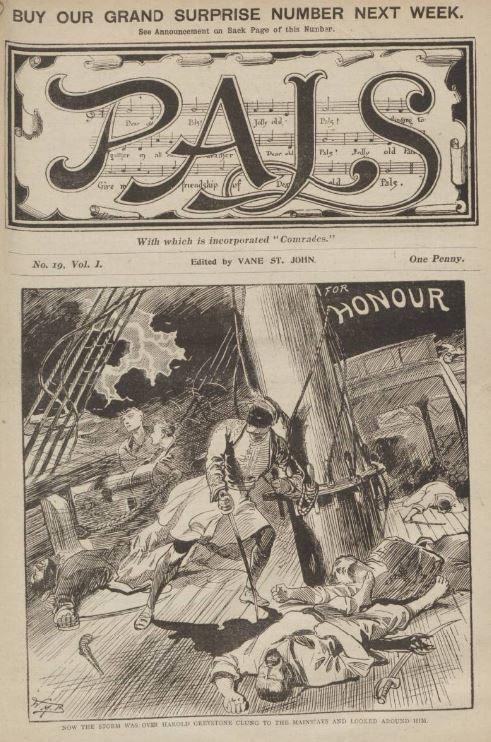
Filling its 24 pages were various serialised fictional stories aimed at boys, with pirates, soldiers, and adventurers making up the heroes and the villains of the swashbuckling stories. Pals included such tales as ‘The Young Blue-Jacket, or England, Home and Beauty,’ and ‘Philip de Lilse; or The Cavalier of the King – A Story of Cromwell’s Time,’ complete with illustrations.
However, Pals was not destined for a long run. Its editor, Vane St John, was known for his issues with debts, and Pals was discontinued in 1896. Vane St John died virtually penniless in 1911 in Peckham.
It’s now time to travel through our new regional additions of the week, and for that journey, we begin in Scotland, with the addition of the Lanark and Carluke Advertiser to our collection. This newspaper was the local sub-edition of the south Lanarkshire weekly tabloid newspaper the Hamilton Advertiser, which was established in 1854 by W. Naismith. Appearing every Thursday, this newspaper was sold in the towns of Carluke, Lanark, Strathaven and Lesmahagow.
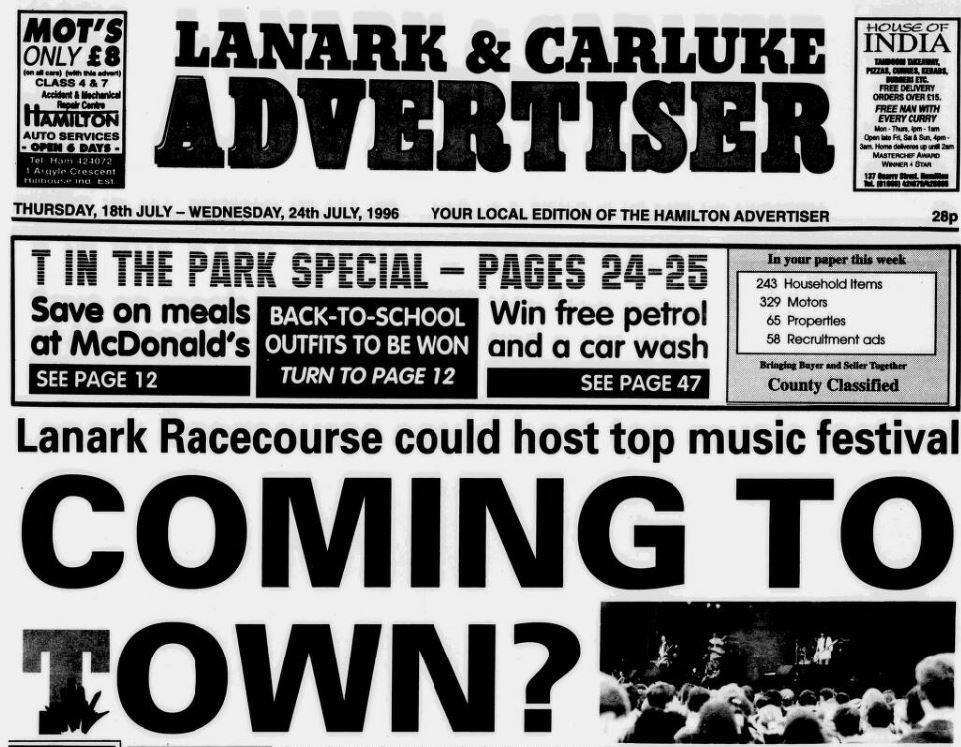
Crossing the border now and back into England, and our next new title of the week is the East Hull Advertiser, which was a companion paper to the Hull Daily Mail. Launched as a successor to the Hull Advertiser freesheet, in the 1990s and 2000s it served the eastern half of the city of Hull, as well as the city’s suburbs of Marfleet, Stoneferry, Sutton-on-Hull and Bransholme.
In 2010 this newspaper absorbed the Holderness Advertiser, and expanded its coverage to incorporate the Holderness peninsula in the south east of the East Riding of Yorkshire, covering the towns of Withernsea, Hedon, and Hornsea, as well as the smaller settlements of Thorngumbald and Patrington.
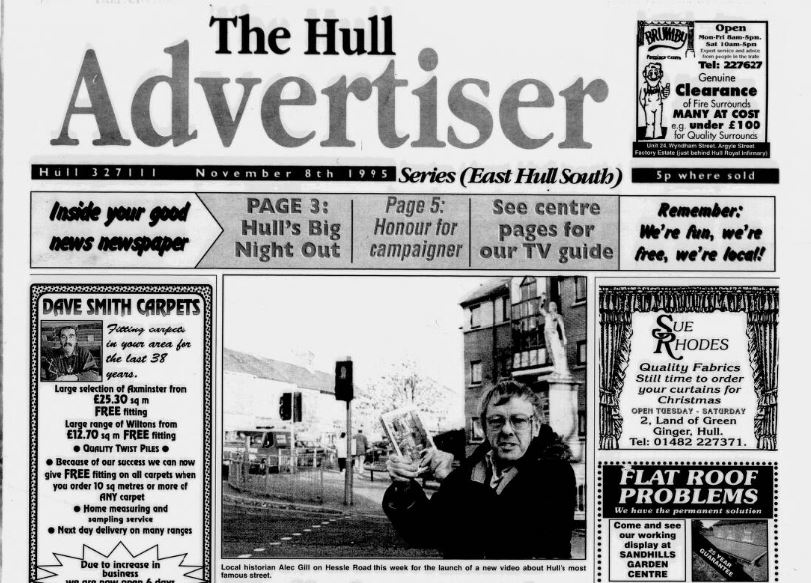
Appearing every Wednesday, in July 2011 the East Hull Advertiser dropped its coverage of the Holderness area, and expanded to take in the west of Hull, becoming known as the Hull Advertiser. Change was in the air again in February 2012, when the publication merged with the East Riding Advertiser to become the Hull & East Riding Advertiser.
From Yorkshire to Lancashire now, and another new Advertiser title, this one being the Bolton Advertiser. Appearing on the first of every month, the Bolton Advertiser was established in 1846 as an ‘advertising sheet for Bolton and the district.’ As well as containing an array of advertisements, the title also contained a ‘retrospect of local and general news,’ and cost just one penny.
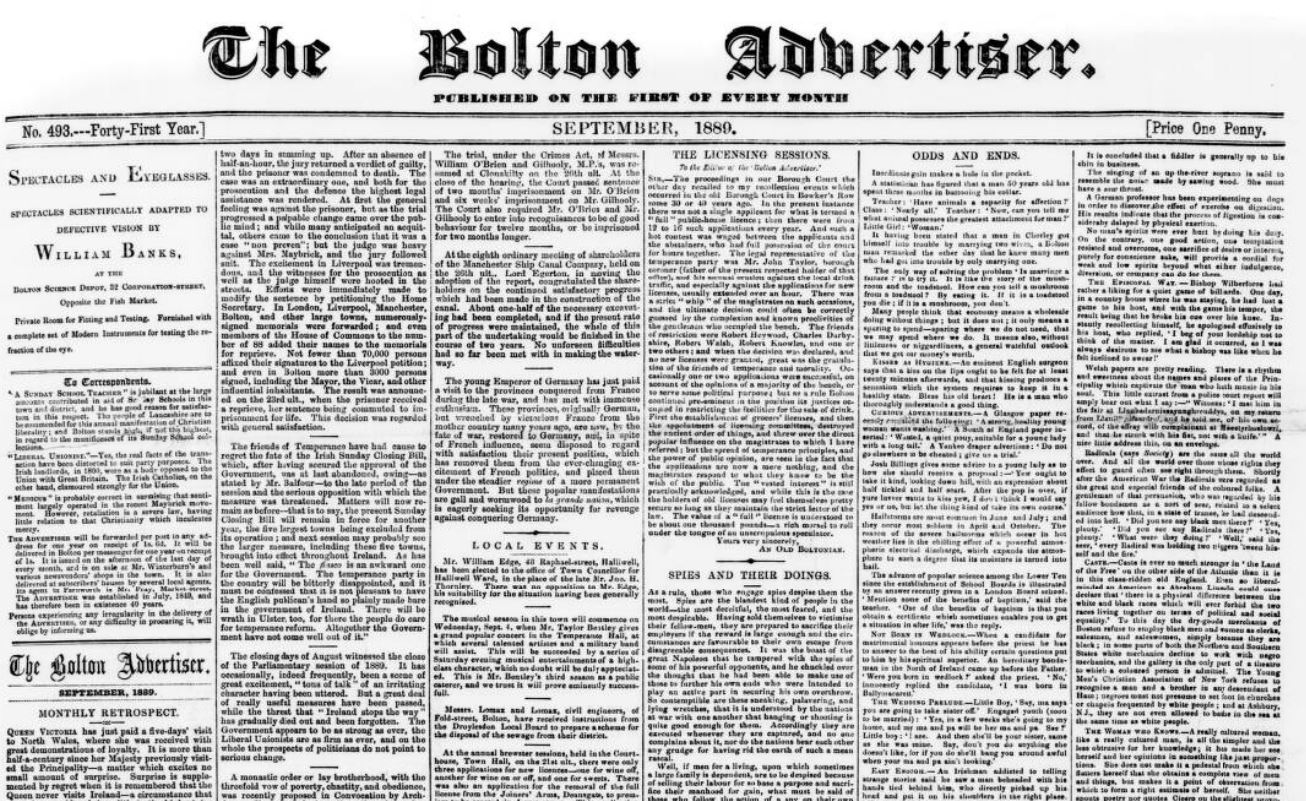
We move a little further south to welcome our next new title of the week, which is the Chester Chronicle (Frodsham & Helsby Edition). The Chester Chronicle is a venerable title that was founded all the way back in 1775, and its Frodsham & Helsby Edition was established in 1995. A weekly tabloid newspaper that is sold in around the towns of Frodsham and Helsby in north west Cheshire, to the south of the River Mersey and the Manchester Ship Canal, this title appears every Friday.
Our next new title of the week is the Shropshire News, which was published in the Shropshire market town of Wellington, the third largest town in the county. Founded in 1855, this independent title appeared every Thursday at the cost of two pence, and was printed and published by bookseller, stationer, and newsagent Robert Hobson.
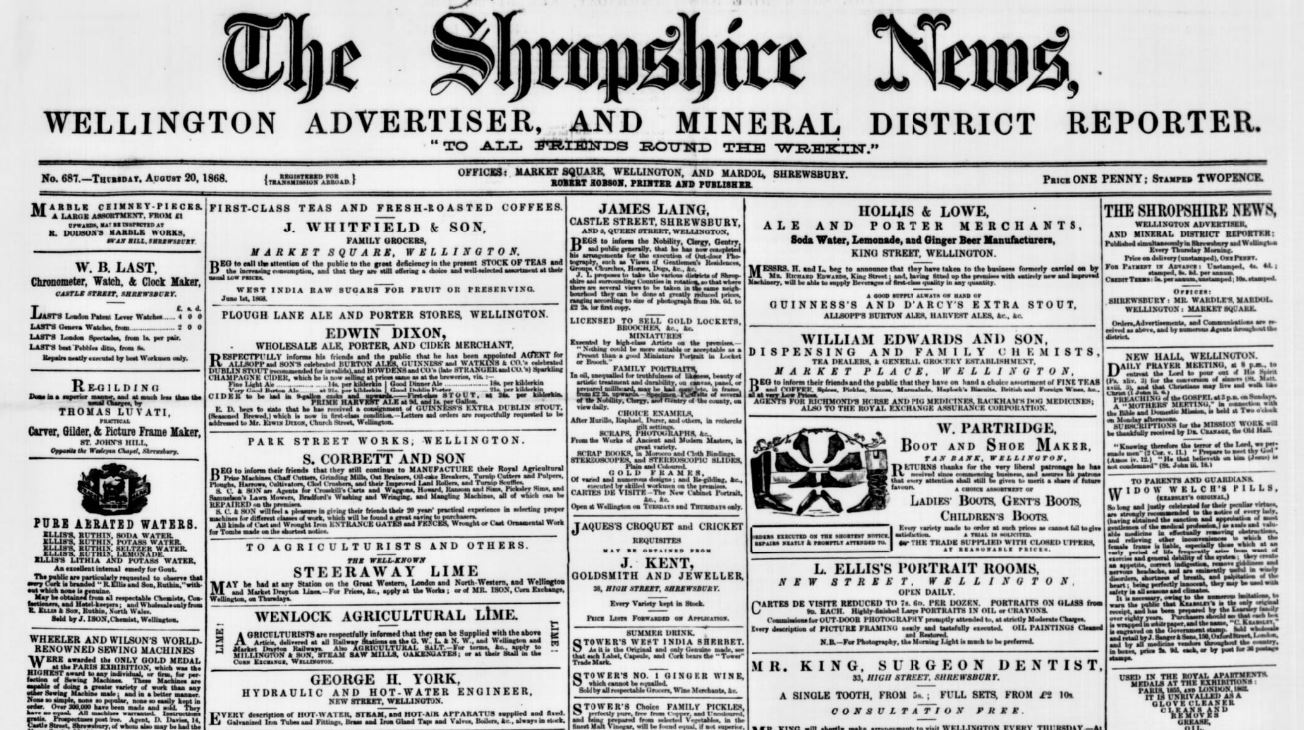
We’ve not quite reached the top of our list with our next new newspaper, which is the Nottingham & Long Eaton Topper, a publication that claimed to be the largest independent freesheet in Britain. Founded by the late businessman Lionel Pickering, who was also the owner of Derby County Football Club from 1991 to 2003 in 1995, it circulated in the city of Nottingham, as well as the city’s neighbouring towns in south Nottinghamshire, and Long Eaton in Derbyshire.
Indeed, at its height, the Nottingham & Long Eaton Topper topped the charts with an official audited circulation of over 200,000 copies delivered to homes every single week. In 2012, it was taken over by Northcliffe Media.
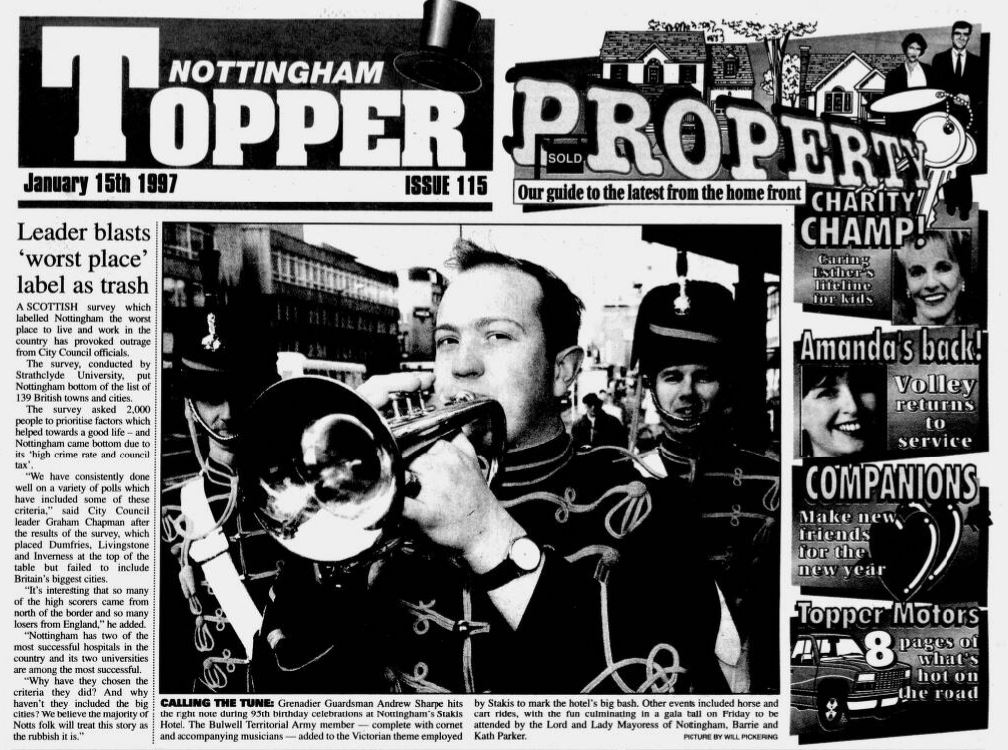
Our next destination is the home counties, and the market town of Dunstable in south Bedfordshire. And this title is something of a rarity: a Sunday freesheet. Dunstable on Sunday was launched in 1997, and was distributed to homes in the Dunstable area, as part of a duo of newspapers with Luton on Sunday. In August 2008 the two titles merged to become the Luton & Dunstable On Sunday, and the newspaper was relaunched in December of that year as the Luton & Dunstable Express, its publication date changed to a Wednesday.
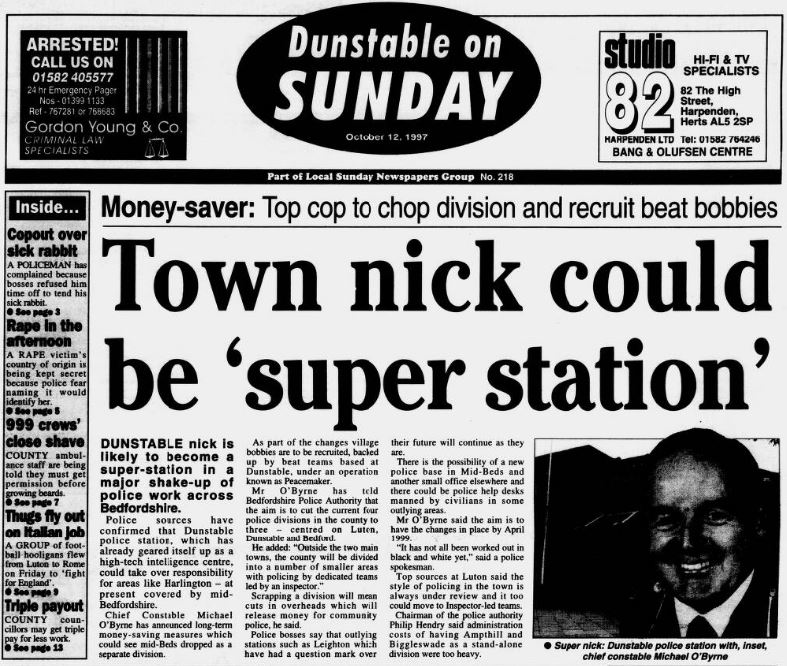
Our final new title of the week is the Walton & Weybridge Leader, which appeared every Thursday in the market town of Walton-on-Thames, on the south bank of the River Thames, in Surrey. The Walton & Weybridge Leader appeared every Thursday, and was distributed to upwards of 40,000 homes in the area.
‘The Women Who Help’ – Women’s Contribution To The First World War
As more and more men joined up during the First World War, and conscription was introduced in 1916, women were called upon to fill the void in Britain’s workforce, and they did so in their thousands. Indeed, by July 1916 it was estimated that over 750,000 women in the United Kingdom had taken up ‘war work,’ and their contributions were celebrated by the press of the day.
They were not, however, celebrated by a writer for War Pictures Weekly, who wrote under the name ‘Mr. John Smith.’ John Smith demanded, in an article from 13 May 1915, ‘where is this nonsense about women going to stop?,’ continuing:
To believe the papers would be to accept the doctrine that the world no longer has any use for a woman who is not three-quarters a man. The only sort of women who are talked about and applauded are women officials, women in uniform, women politicians, and women recruiting-sergeants. Why?
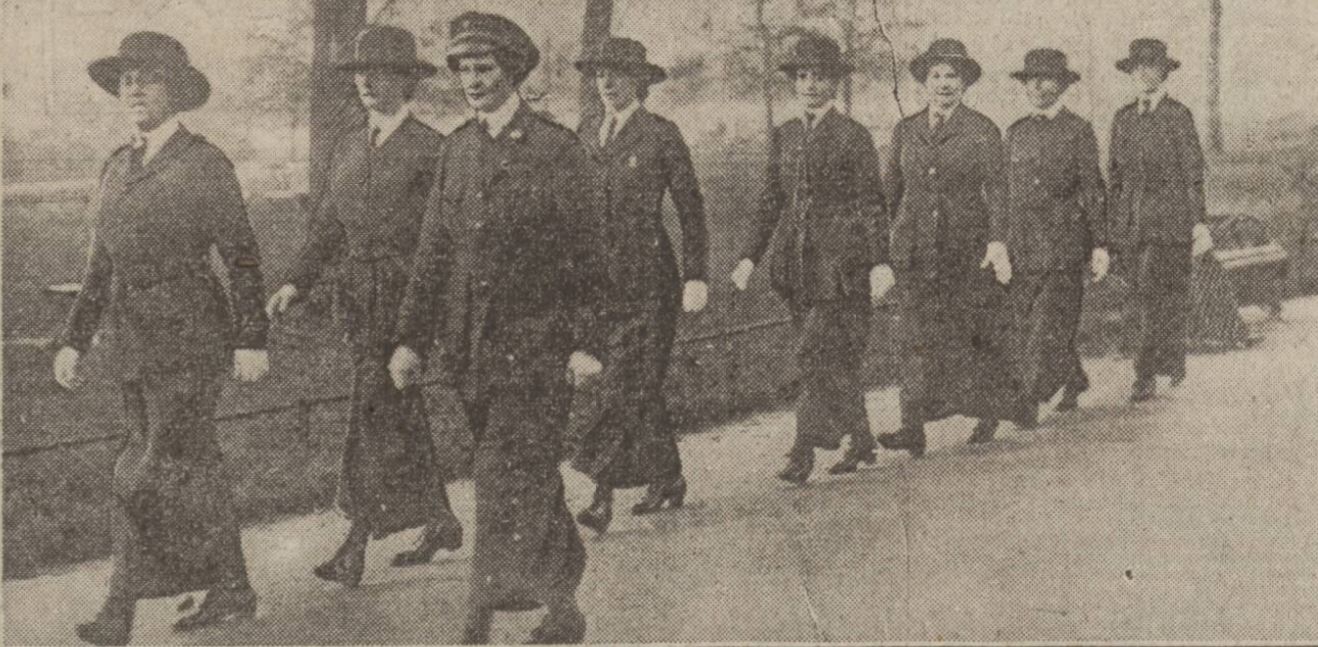
But the writer’s point is not necessarily to shame women’s war work. Indeed, he looks to celebrate the work of the ‘ordinary woman,’ the women who perhaps were not wearing uniforms or undertaking leadership roles.
Mr. Smith explains:
After all, just look at what the ordinary woman is doing, her quiet heroism in all sorts of difficulties, and the real work she puts into the day – for the woman’s part is a hard one, whether it is played at home, in the factory, or in the office.
He goes on to state how ‘every day [women] are proving themselves worthy of the British soldier,’ giving the example of how a group of nameless women answered the ‘Government’s request for respirators.’ This request had stemmed from the German use of poison gas, and these women were, according to Mr. Smith, able to source ‘over 500,000 [respirators] within the space of 36 hours.’ Nobody knew who had made them, only the ‘thousands of nameless women’ who had provided them.

Mr. Smith continues:
Take the case of the girls who are acting as booking-clerks on the L. and N.W. Railway and elsewhere. Each one of them has freed a man for the fighting-line. They do their work without asking for glory. Take the case of the housewife, who slaves and worries to make a small income meet increased taxation and increased cost of living. These are the women who are saving the nation, and deserve our thanks. No uniform, no glory, often little or no pay, but all the time, real, ungrudging work. All honour to them!
In the end, Mr. John Smith celebrates the many different roles women were playing in the war. He did not have to do this to the detriment of the women who served in uniform (perhaps this was too close to them assuming a male role in society for him), but he does highlight the hardships that every woman faced during the First World War, and the sacrifices they would have had to have made.

Find out more about women’s war work in the First World War in our special blog here, and view some wonderful photographs of women’s war war from our newspapers here.
New Titles
| TITLE | DATE RANGE |
| Ayrshire World | 1996 |
| Bolton Advertiser | 1889 |
| Canterbury Times | 1997 |
| Chester Chronicle (Frodsham & Helsby edition) | 1995-1996 |
| Dunstable on Sunday | 1997 |
| East Hull Advertiser | 1995-1996 |
| Exeter Leader | 1997 |
| Feltham Chronicle | 1996 |
| Lanark & Carluke Advertiser | 1996 |
| Million | 1892-1895 |
| North Tyneside herald & post | 1997 |
| Nottingham & Long Eaton Topper | 1997 |
| Pals | 1895 |
| Shropshire News | 1868 |
| Walton & Weybridge Leader | 1995 |
| War Pictures Weekly and the London Illustrated Weekly | 1914-1916 |
| West Hull Advertiser | 1996 |
| Woking Informer | 1996 |
Updated Titles
This week we have updated 82 of our existing titles.
You can learn more about each of the titles we add to every week by clicking on their names. On each paper’s title page, you can read a FREE sample issue, learn more about our current holdings, and our plans for digitisation.
You can keep up to date with all the latest additions by visiting the recently added page. You can even look ahead to see what we’re going to add tomorrow.


